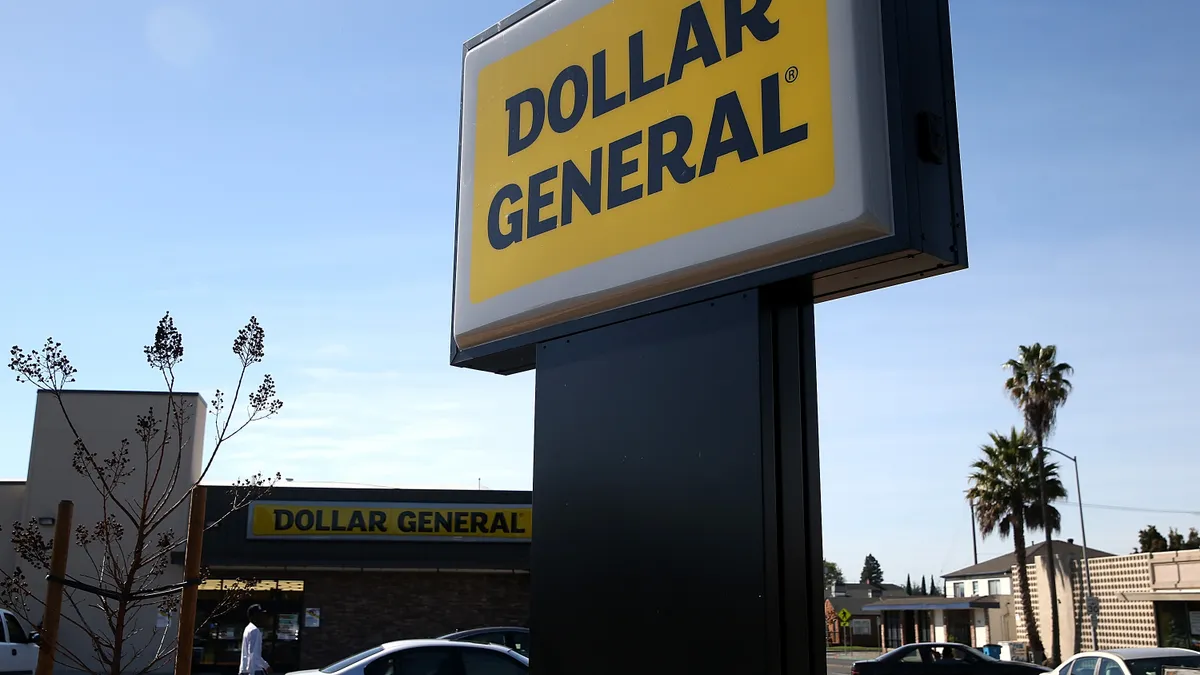Dive Brief:
- Dollar General encountered unexpected delays in opening enough temporary warehouse space in Q3, resulting in more than $40 million in added supply chain costs, CEO Jeff Owen said on an earnings call.
- External challenges such as permitting were the main source of the delays, he said. During the same period, seasonal goods came in earlier than anticipated.
- The lack of adequate space led to fees for delays in returning shipping containers and some stores being serviced “from less-than-optimal distribution center alignments,” which led to higher transportation costs, Owen said. Cost pressures tied to storage constraints are expected to be largely resolved by Q1.
Dive Insight:
Opening temporary storage facilities is a near-term tactic to support Dollar General's growing distribution needs as it works to get permanent warehouse capacity up and running. In Q3, the retailer's merchandise inventories increased nearly 35% YoY.
"Similar to the first half of the year, this increase primarily reflects the impact of product cost inflation, a greater mix of higher-value products ... and the early receipt of seasonal goods," President and CFO John Garratt said.
On the positive side for Dollar General, it expects lower levels of inventory growth starting in Q4 and has already begun to relieve capacity pressures with temporary warehouses now online.
Owen also said on the Dec. 1 call that the opening of two permanent regional distribution hubs in Georgia and Texas the past few weeks has increased capacity by more than 2 million square feet. They will operate "as intermediary facilities between import points and the rest of our distribution centers," he added.
Additionally, facility openings are in the works in Blair, Nebraska; North Little Rock, Arkansas; Aurora, Colorado; and Salem, Oregon. The Nebraska distribution center is slated to begin shipping by the end of the fiscal year, Owen said. The others are expected to come online over the next 18 months.
"The North Little Rock and Salem distribution centers are expected to add to the Company’s growing number of dual facilities, which combines the capabilities of ambient and DG Fresh supply chain networks, and the Aurora facility will provide traditional functionalities," according to a news release. DG Fresh is the company's self-distribution model for frozen and refrigerated products.
In February, the company had 28 distribution centers used for non-refrigerated products, cold storage or a combination of the two. It also leased roughly 2 million square feet of additional warehouse space. The new facilities will expand Dollar General’s capacity further.
"Collectively, all of these new distribution centers will ultimately result in a more than 20% increase in total capacity and position us well to support continued growth in the years to come," Owen said.















